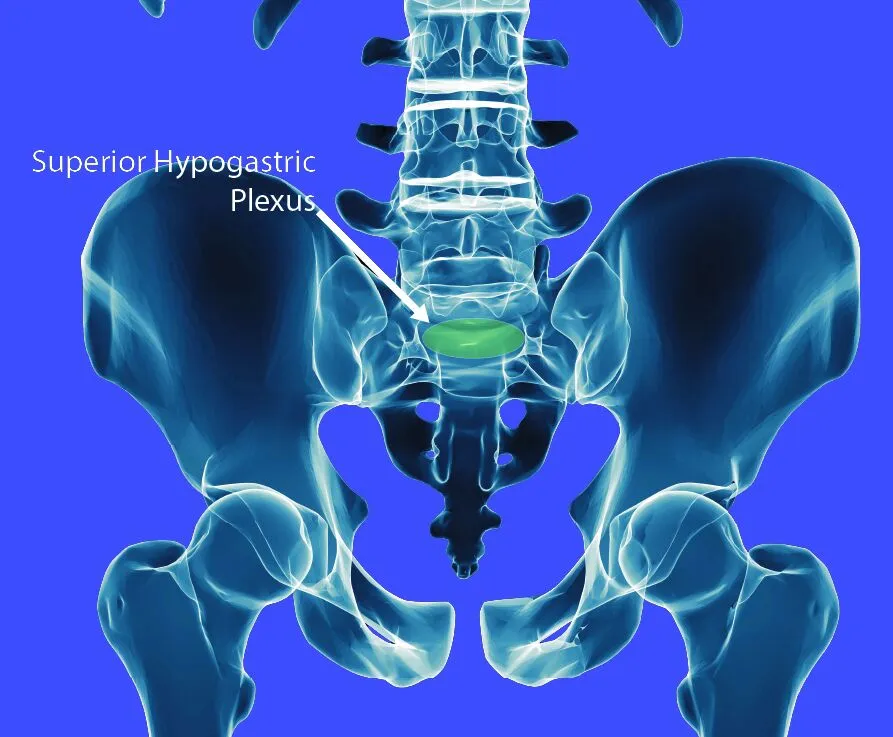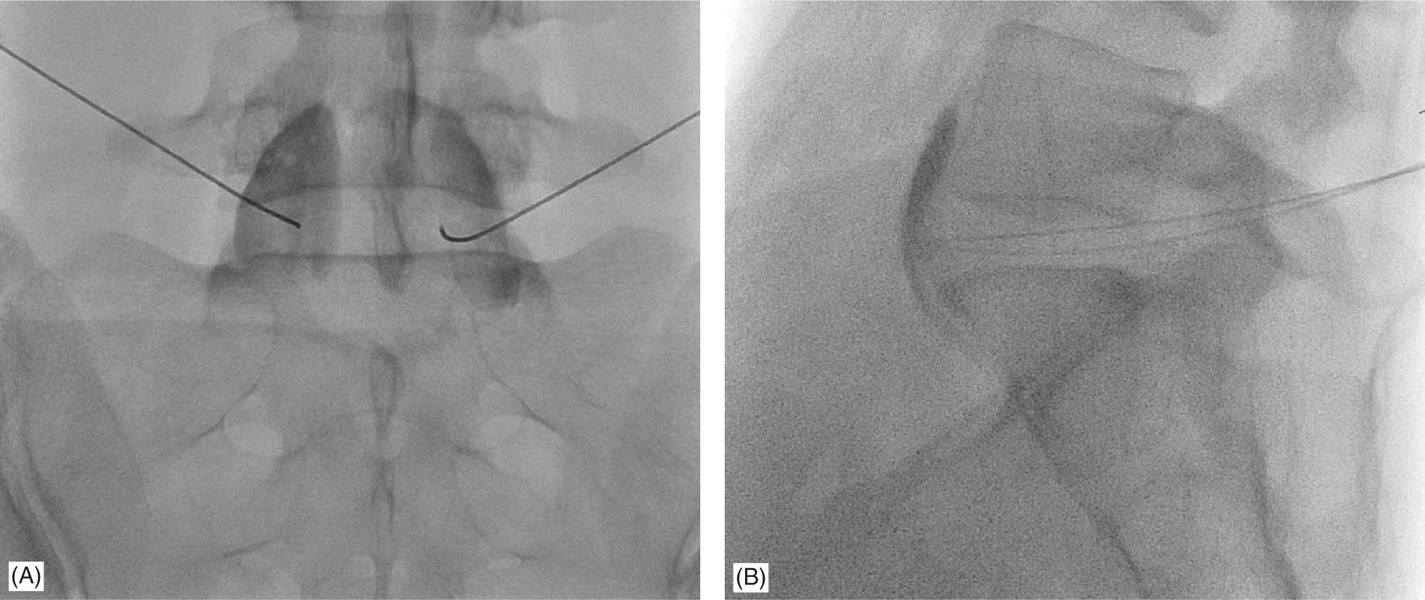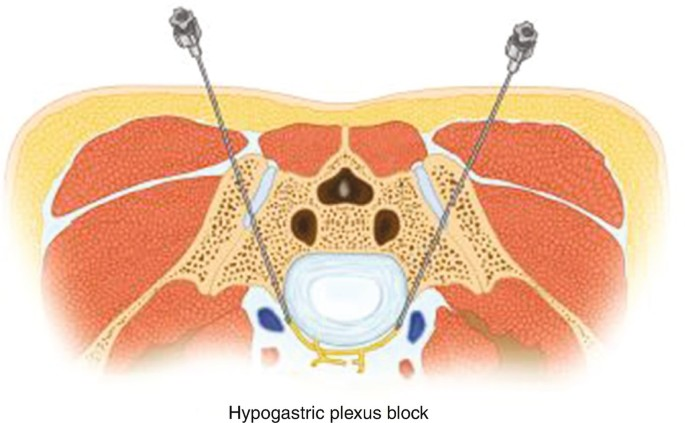Mitigate Pain Clinic – Dr Jeshnu Tople – Pain Management Specialist In Nagpur
Hypogastric Plexus Block & Neurolysis
Hypogastric Plexus Block and Neurolysis Advanced Relief for Pelvic Pain
At Mitigate Pain Clinic, we specialize in interventional pain management techniques designed to alleviate pelvic pain. Among these, the superior hypogastric plexus block and neurolysis stand out as effective procedures for managing various pelvic pain syndromes.
About the Superior Hypogastric Plexus
Superior Hypogastric Plexus is a bunch of nerves located behind your belly, specifically in front of the lower part of your spine. It carries different kinds of messages including pain signals from the pelvic organs, such as bladder, uterus (if you’re a woman), rectum, vagina (if you’re a woman), and prostate (if you’re a man).
Indications for Superior Hypogastric Plexus Block and Neurolysis
These procedures are primarily indicated for managing chronic pelvic pain that is unresponsive to conventional treatments. Specific conditions include:
- Endometriosis: Pain caused by the excess growth of uterine tissue.
- Dysmenorrhea: Severe menstrual pain.
- Dyspareunia: Painful intercourse.
- Vulvitis: Chronic inflammation of the vulva.
- Pelvic Inflammatory Disease (PID): Persistent pain associated with inflammation of the reproductive organs.
- Pelvic Adhesions and Fibrosis: Pain resulting from scar tissue formation after the surgery in the pelvic area.
- Pelvic Congestion Syndrome: Chronic pelvic pain due to varicose veins in the pelvis.
- Interstitial Cystitis: Chronic bladder pain and urinary symptoms.
- Prostatitis: Chronic inflammation of the prostate gland.
- Irritable Bowel Syndrome (IBS): Pelvic pain associated with bowel dysfunction.
- Pain secondary to cancer in the pelvic area
In essence, if you have persistent pain in your lower abdomen or pelvic region that hasn’t responded well to conventional treatments like oral medications, your interventional pain physician might consider a superior hypogastric plexus block as a diagnostic tool (to see if the nerves are the source of pain) or as a therapeutic intervention to provide pain relief.








Technique for Superior Hypogastric Plexus Block
- The patient lies down on belly in the operating room.
- Needle insertion points are marked with the help of fluoroscopy (X-ray).
- After local anesthesia, needles are advanced.
- Correct placement is confirmed with contrast spread in the midline region.
- Once the needles are placed correctly local anaesthetic with or without steroid is injected.


Superior Hypogastric Plexus Neurolysis
For patients with intractable pelvic pain, particularly due to malignancies, neurolytic agents such as alcohol or phenol can be used to achieve prolonged pain relief. The procedure is essentially the same; the only difference is instead of local anesthetic, alcohol or phenol is injected.
Benefits of Superior Hypogastric Plexus Block and Neurolysis
The primary benefit of these procedures is significant pain reduction, leading to:
- Decreased reliance on analgesics, thereby minimizing associated side effects.
- Improved quality of life through better pain management.
- Enhanced ability to participate in daily activities and physical therapy.
Potential Risks and Complications
While generally safe, these procedures carry potential risks:
- Local soreness and bruising at the injection site
- Temporary increase in pain
- Infection, rarely
- Bleeding, rarely
Conclusion
At Mitigate Pain Clinic, we are committed to providing advanced interventional pain management solutions. The superior hypogastric plexus block and neurolysis are valuable procedures for patients suffering from chronic pelvic pain unresponsive to conventional therapies.
Frequently Asked Questions
This procedure is effective for managing chronic pelvic pain conditions such as endometriosis, interstitial cystitis, postoperative adhesions and pain associated with pelvic malignancies, etc.
Pain relief duration varies among individuals. Diagnostic blocks with local anesthetics may provide temporary relief, while neurolytic blocks can offer longer-lasting pain reduction.
Yes, when performed by experienced practitioners, it is generally safe. However, as with any medical procedure, there are potential risks and complications.
A nerve block involves the injection of anesthetic and/or steroid medication to temporarily disrupt pain signals, often used as diagnostic intervention or for short-term relief.
Neurolysis, on the other hand, uses chemical agents like alcohol or phenol to destroy nerve fibers, providing longer-term pain relief, especially for cancer-related pain.
Patients may feel mild discomfort during needle insertion, but the procedure is usually performed with local anesthesia and sometimes mild sedation.
Patients with chronic, intractable pelvic pain—particularly due to cancer of the cervix, uterus, bladder, prostate, or rectum—who have not responded to other treatments may be ideal candidates. It is also used for non-malignant pelvic pain that significantly impacts quality of life.
Most patients can return to light activities the next day. However, it's recommended to avoid strenuous activities for at least 24–48 hours.